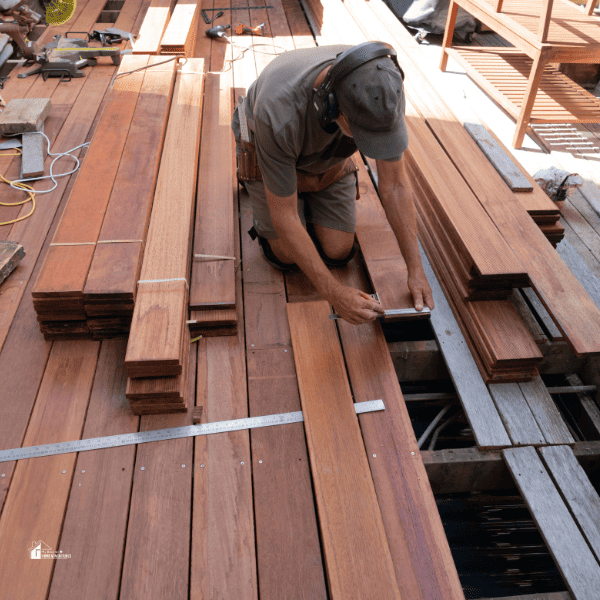Material Matters: Choosing the Right Decking for Durability and Aesthetics
This post may contain affiliate links which might earn us money. Please read my Disclosure and Privacy policies hereChoosing the suitable decking material is essential to balance durability and aesthetic appeal in your outdoor area. This choice significantly influences not just your deck's appearance and ambiance but also its durability and the level of maintenance it will require over time. This guide delves into available decking materials, examining their advantages and disadvantages. Our goal is to provide you with comprehensive insights that will aid you in making a well-informed decision for your outdoor haven.
Decking materials come with distinct properties and characteristics. As we dive into wood, composite, plastic, and aluminum decking, consider how each option aligns with your specific needs, environmental conditions, and personal style.

Overview of Common Decking Materials
The world of decking materials is incredibly diverse, presenting various options such as wood, composite, plastic, and aluminum. These materials have unique benefits and drawbacks, catering to different aesthetic preferences and functional requirements. Wood offers natural beauty, composite combines durability with ease of maintenance, plastic provides exceptional weather resistance, and aluminum stands out for its modern look and robustness.
Understanding the performance of different decking materials under varying environmental conditions is key. Each option's long-term durability, maintenance needs, and visual appeal significantly influence the ideal choice for your decking project. Grasping these factors is vital to ensure you create an outdoor space that is visually stunning and resilient over time and use. Let's delve into these aspects to help you make the best decision for your outdoor area:
Delving into Wood Decking
Wood decking, known for its natural beauty, includes popular choices like cedar, redwood, and pressure-treated lumber. Each type offers unique aesthetics and a warm, inviting look for outdoor spaces. The natural charm of wood makes it a timeless choice for many.
However, wood requires consistent upkeep to maintain its appearance and structural integrity.
Exploring Composite Decking
Composite decking, a mixture of wood fibers and plastics, combines the beauty of wood with reduced maintenance. Resistant to rotting, warping, and fading, it offers a practical, long-lasting alternative to traditional wood decking. Homeowners can achieve a natural wood look with various finishes and colors without extensive upkeep.
This material's growing popularity stems from its balance of durability and aesthetic versatility.
The Advantages of Plastic Decking
Plastic decking, made from PVC or other synthetic materials, stands out for its weather resistance and minimal maintenance. It offers an enduring solution for outdoor spaces, ideal for those wanting lasting color and texture without periodic treatments.
Considering Aluminum Decking
Aluminum decking offers a modern, resilient solution for outdoor areas. Fire-resistant, waterproof, and sporting a contemporary design, it's an excellent choice for a modern outdoor setting. Its sustainability, due to recyclability, adds an eco-friendly aspect.
Innovative Decking Technologies and Enhancements
As decking materials evolve, innovative technologies and enhancements are continually emerging. This section delves into advancements like hidden fastener systems, thermal modification of wood for enhanced durability, and the creation of eco-friendly composites.
Staying informed about these innovations is crucial for selecting a material that aligns with your aesthetic and functional requirements and leverages the latest decking technology. Consulting with professional deck builders can provide additional insights, ensuring that your choice integrates these modern advancements effectively in your decking project.

Decking and Environmental Sustainability
In today's eco-conscious world, the environmental impact of decking materials has become a pivotal concern. Exploring the sustainability of various options involves assessing the entire lifecycle – from sourcing materials and manufacturing processes to end-of-life disposal strategies.
Opting for sustainable decking materials creates an environmentally friendly outdoor space and ensures that aesthetics and quality are not compromised. Homeowners must understand these aspects, enabling them to make informed decisions that align with sustainable living while enjoying a beautifully crafted outdoor area.
How to Choose the Right Decking Material
The choice of decking material should consider factors such as climate, usage, personal style, and budget. Understanding how these influence your deck's long-term performance and appearance is essential. We'll guide you through these considerations, aiding in your decision-making process.
The environmental impact of your chosen material is also crucial. As sustainability becomes more critical, it's essential to understand the ecological footprint of your decking choice. This section will provide insights into the environmental impacts of each material.
Conclusion
Selecting the appropriate decking material is crucial for crafting a beautiful and long-lasting outdoor space. The spectrum ranges from the timeless charm of wood to aluminum's sleek, contemporary functionality, with each material offering its distinct qualities. It is vital to choose a material that matches your aesthetic preferences and aligns with your ability to maintain it and your commitment to environmental sustainability.
A well-chosen decking material elevates your outdoor living experience and contributes to your property's overall value. You can create an inviting and sustainable outdoor environment by thoroughly evaluating each option. This decision should balance practicality and personal style, ensuring that your deck is a visually pleasing extension of your home and a testament to your environmental consciousness and ease of upkeep.








